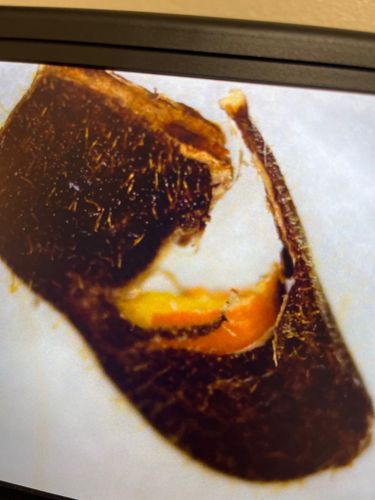Tachinid Fly Puparium (likely)
Scientific Name: Variable (e.g., Exorista, Lespesia)
Order & Family: Order: Diptera, Family: Tachinidae
Size: Puparia vary greatly depending on the species and host size, but typically range from a few millimeters to over a centimeter in length. Adult flies range from 2 mm to 18 mm.

Natural Habitat
Widely distributed globally, found in diverse terrestrial habitats where their host insects are present, including agricultural fields, forests, gardens, and grasslands.
Diet & Feeding
Larvae are endoparasitoids, specifically feeding on the internal tissues of other insects, often caterpillars, beetles, or true bugs. Adult flies typically feed on nectar and honeydew, if at all.
Behavior Patterns
Larvae develop inside pupae which are often found in cocoons made from silk and debris. They undergo complete metamorphosis. The adults are typically not parasitic and often have reduced mouthparts, focusing on reproduction.
Risks & Benefits
Primarily beneficial as they are important natural enemies of various insect pests, thus playing a significant role in biological control in agriculture and natural ecosystems. They pose no direct risk to humans.
Identified on: 9/4/2025